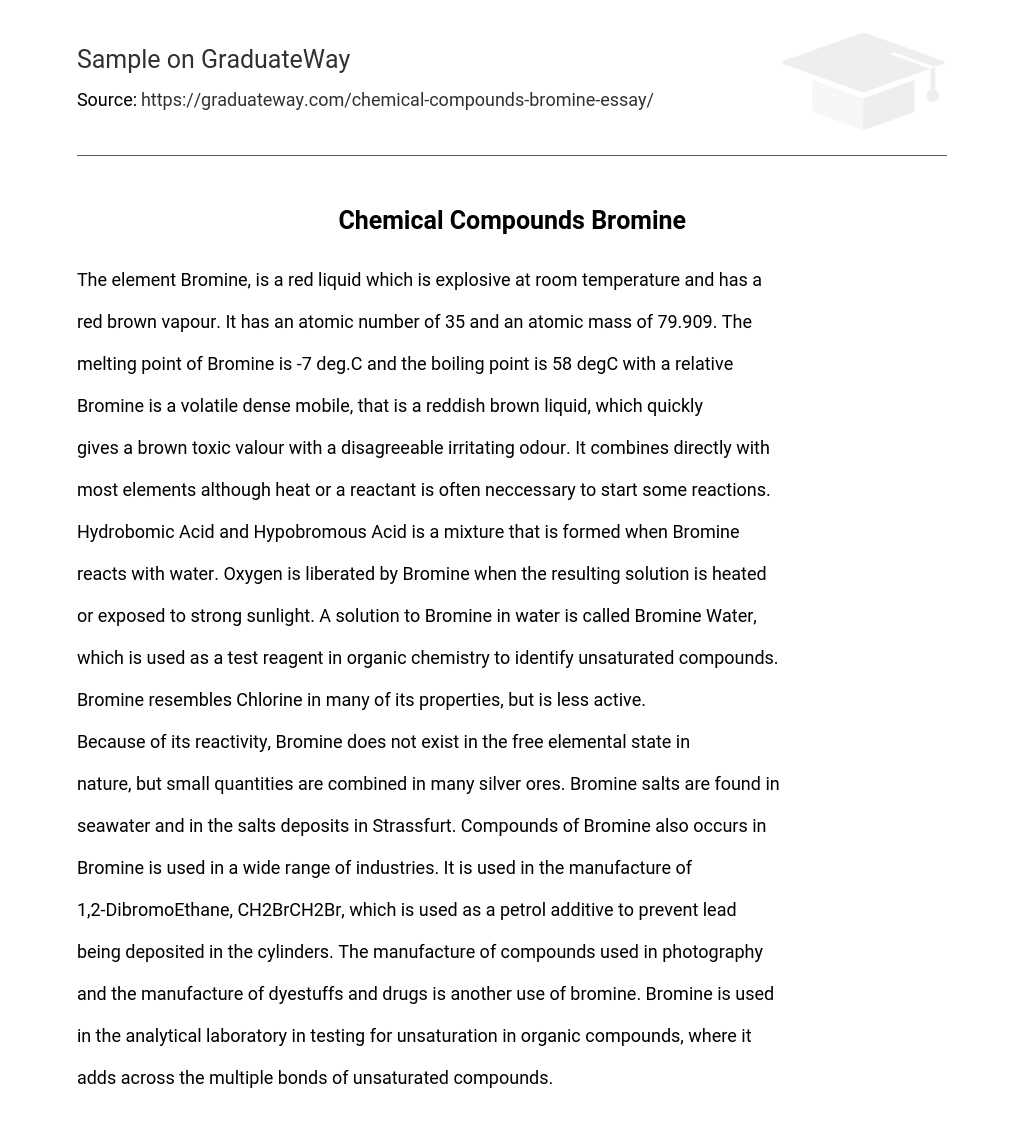The element Bromine, is a red liquid which is explosive at room temperature and has a
red brown vapour. It has an atomic number of 35 and an atomic mass of 79.909. The
melting point of Bromine is -7 deg.C and the boiling point is 58 degC with a relative
Bromine is a volatile dense mobile, that is a reddish brown liquid, which quickly
gives a brown toxic valour with a disagreeable irritating odour. It combines directly with
most elements although heat or a reactant is often neccessary to start some reactions.
Hydrobomic Acid and Hypobromous Acid is a mixture that is formed when Bromine
reacts with water. Oxygen is liberated by Bromine when the resulting solution is heated
or exposed to strong sunlight. A solution to Bromine in water is called Bromine Water,
which is used as a test reagent in organic chemistry to identify unsaturated compounds.
Bromine resembles Chlorine in many of its properties, but is less active.
Because of its reactivity, Bromine does not exist in the free elemental state in
nature, but small quantities are combined in many silver ores. Bromine salts are found in
seawater and in the salts deposits in Strassfurt. Compounds of Bromine also occurs in
Bromine is used in a wide range of industries. It is used in the manufacture of
1,2-DibromoEthane, CH2BrCH2Br, which is used as a petrol additive to prevent lead
being deposited in the cylinders. The manufacture of compounds used in photography
and the manufacture of dyestuffs and drugs is another use of bromine. Bromine is used
in the analytical laboratory in testing for unsaturation in organic compounds, where it
adds across the multiple bonds of unsaturated compounds.





